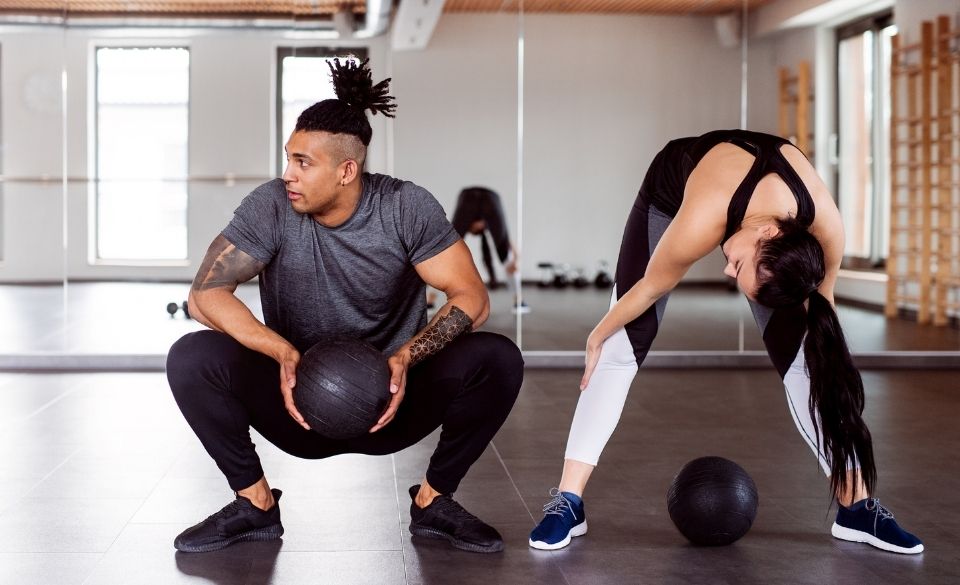
Vertical Loading – UPDATED 2022 – A Complete Guide
Page Contents
As much as some things are backed by science, a lot of the parts of maintaining a fitness routine are subjective. It’s down to personal preference. Something that works for you might not work for someone else, and something that works for them won’t work for you.
Vertical loading is one of these things. When it comes to vertical loading, there’s no right answer as to whether it’s bad or not. You might have been doing vertical loading without realizing it.
This guide will go into detail on what is vertical loading. We’ll explain the disadvantages, advantages, examples, and comparisons to the other types of loading.
Vertical Loading – A Complete Guide
By its name, you might think that vertical loading is something to do with weights. It’s not about weights or any physical part of an exercise. Think of the term as more of an abstract thing, like a metaphor.
Loading refers to how you structure your exercise routine. There are two types of loading: vertical and horizontal. For now, we’ll focus on the former.
Vertical loading is where you alternate between sets of different exercises. For example, you do set 1 of exercise A, then set 1 of exercise B, and then back to set 2 of exercise A. You repeat this process until all of your sets are done.
This might sound familiar as being a circuit style of doing exercise. Circuit exercises are usually full-body workouts that are kind of like a gauntlet routine. You run through 1 set of each muscle group exercise, then repeat in the same order.
Circuit training and vertical loading are often terms used to talk about the same type of training. The key points for each are that they have little to no rest time in-between each exercise. Instead, the rest happens after every set is done.
It’s important to note that for this type of training you work, you don’t just need to alternate exercises but alternate the muscle groups you use too. If you start with a chest workout, your next set needs to be anywhere other than the chest.
Some people have reported success, or just prefer to work downwards. They start with the chest, then move to the arms, then the core, and so on.
Disadvantages of Vertical Loading
Vertical loading has become more popular, but it won’t work for everyone. And just like every exercise routine or philosophy, it has some key drawbacks and disadvantages.
First of all, this type of training is not designed for strength training. It’s more about building your stamina and your endurance than building muscle. Exercises that build strength are not effective when done in short bursts.
This is because the goal of muscle-building exercises is to enter a state of hypertrophy. Hypertrophy requires you to focus on a particular muscle until it begins to strain, and you feel the burn.
At most, circuit training will put you into anaerobic respiration after a couple of sets. This is good for a lot of things. It’s not good for building strength, though.
Next, another disadvantage of vertical loading is that it’s not very beginner-friendly. Chances are if you’ve never done it before, after 1 round you’ll feel like you want to die. At a base level, you need to be considered fit to keep up with this training.

Vertical Loading NASM – What You Should Know?
NASM, or the National Academy of Sports Medicine, has a lot of information about vertical loading. They even have their dedicated modifications and adaptations of it. One of the most popular is Peripheral Heart Action Training.
This is a type of circuit training that keeps the core principle but takes it a step further by having you switch between upper and lower body exercises at a rapid pace. This makes Peripheral Heart Action Training an effective full-body workout.
NASM also uses and promotes traditional circuit training, which you can find more information about on their website. It’s a great tool for prospective personal trainers and people wanting to learn more about vertical loading.
Vertical Loading Examples
As mentioned, Peripheral Heart Action Training is one of the best named vertical loading examples. There are many others, many of which will be routines that are adopted by individuals to suit their routines.
Some circuit training examples involve different exercises every circuit, to shake things up. They still have the benefits of circuit training because each set block is the same muscle group.
For a simple, beginner-friendly vertical loading routine, you can try a 3-exercise routine. Simply alternate between decline push-ups, split squats, and mountain climbers for a minimum of 3 sets each.
Horizontal vs Vertical Loading Examples – How Do They Differ?
We’ve talked a lot about vertical loading, but as mentioned there’s another type. This is horizontal loading. This type of loading is most common and traditional and is where you do every set of an exercise before moving on to the next.
Simply, say you want to do 3 sets each of exercises A, B, and C. You would do 3 sets of exercise A, then 3 sets of exercise B, and finally 3 sets of exercise C.
The two types of loading differ most in that horizontal loading has a longer period of rest between each exercise. This makes it more accessible to beginners.
A key example of horizontal loading is focused on muscle groups. To do this effectively, you would need to do all sets of your exercise for say, the chest muscle group. Only after this should you move on to any other muscle group.
Vertical Loading – Closing Thoughts
So, is vertical loading a good fit for you? It has its benefits. The key with this type of exercise is to do it in moderation and use it as a supplement to your existing horizontal loading routines, however.
If you want to try vertical loading for yourself, you need to build up your endurance. Our personalized training plans will help you to do this and more!


